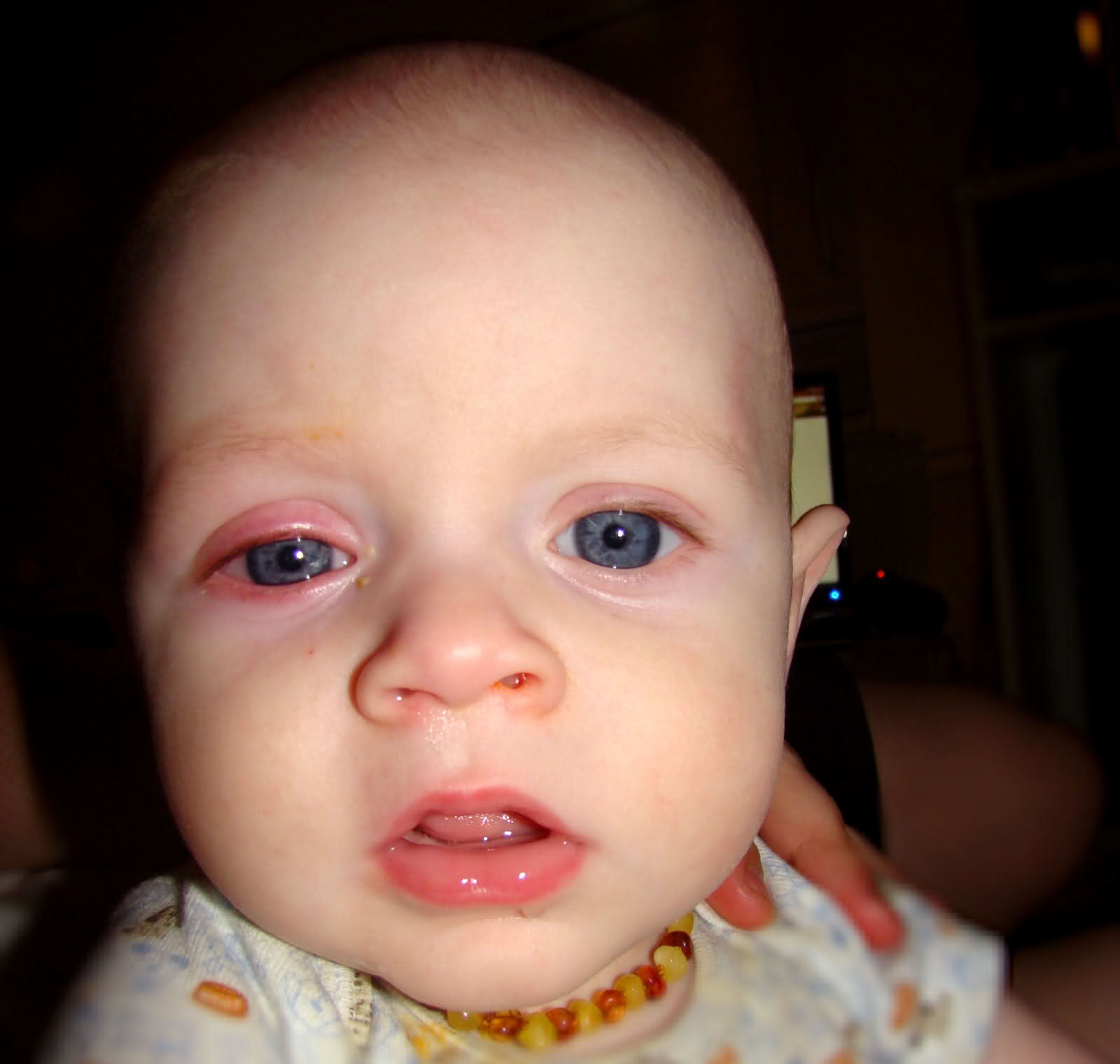Conjunctivitis, or pink eye, is the inflammation of the conjunctiva. It is a relatively common condition that affects people of all ages, even babies. Conjunctivitis in children should be taken more seriously and requires a doctor to determine if any treatment is required.
Causes and Symptoms of Conjunctivitis in Babies

There are a number of things that can cause pink eye in babies. The most common causes include:
- Viral Infection: If you find that your baby has symptoms of the cold, then a viral infection is the most likely explanation of the pink eye.
- Bacterial Infection: One of the signs of bacterial infection is the presence of a thick yellowish discharge from the eye. This discharge can even cause the eye to stick together. The most probable culprits here are staphylococcus and streptococcus. Newborn babies exposed to gonorrhea during birth can suffer from a dangerous version of conjunctivitis called ophthalmia neonatorum.
- Allergic Reaction: Allergies are actually pretty uncommon in babies less than one-year-old; however, they can occur. Symptoms include a constant runny nose, water discharge, and red eyes.
- Blocked Rear Ducts: It is also very common and can, in fact, occur in one or both eyes. Studies estimate that 20% of children are born with a blocked tear duct.
Other irritants can also enter the eye of a baby and cause pink eye. One of the common cause is exposure to chemicals in a swimming pool.
How Is Conjunctivitis in Babies Treated?
- In most cases, conjunctivitis in kids does not require any treatment whatsoever. The virus which causes this will go away on its own.
- If there is a possibility of bacterial infection, then the baby will need antibiotic eye drops. It can be difficult for you to apply eye drops for the baby. One of the tricks is to place the eye drop when the eyes are closed so that it can enter the eye when the baby opens eyes.
- There are also ointments that can be applied on the eye near the meeting point of eyelids.
- Anti-allergic medication in the form of either drops or syrup may also be prescribed by the doctor.
- A few drops of breast milk can also be used as eye drops to put in the eye of the infant to treat and clear up any infection that may have occurred.
How to Care for Your Baby at Home
Conjunctivitis in babies can make them quite irritable. Here are what you can do to give them some relief.
- Use a clean cloth soaked in some warm water and apply it on the closed eyes of your child. Make sure that you do not use the same cloth on the other eye because the infection can spread.
- While a warm compress is the best in bacterial conjunctivitis, a cold one will work better if an allergy is suspected to be the cause behind it.
- There are lubrication solutions available over-the-counter, which can be used to provide relief as well.
How to Prevent Conjunctivitis in Babies
Conjunctivitis can be prevented in the first place.
- Start with maintaining excellent hygiene yourself. Wash your hands before touching the baby and ensure that everyone around you does the same.
- The baby should have its own separate towel, napkins, washcloth and even pillowcases to prevent any spread of infection from other family members.
- Cotton balls used to clean the baby’s eyes should not be reused under any circumstances.
- If an allergy is suspected to be the cause of pink eye, then try to identify the allergen so that you can effectively keep your child away from it.
- Women who have an STD should have a test done for any infection that may cause the baby to have conjunctivitis. The doctor will come up with a plan to prevent the baby from being infected.
